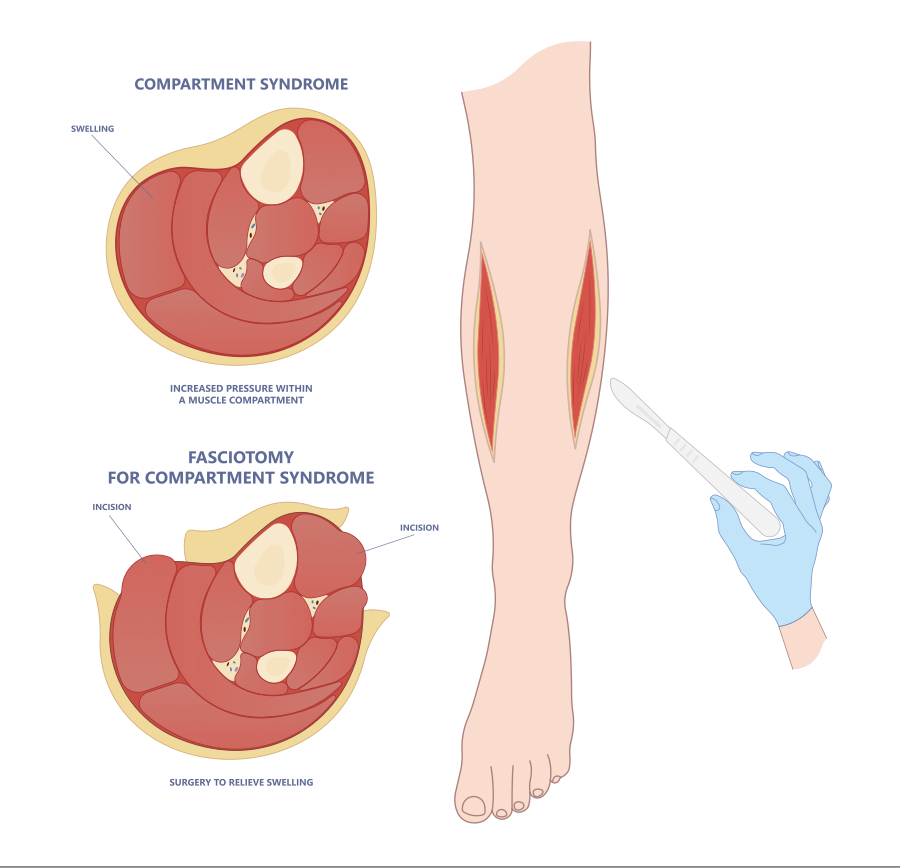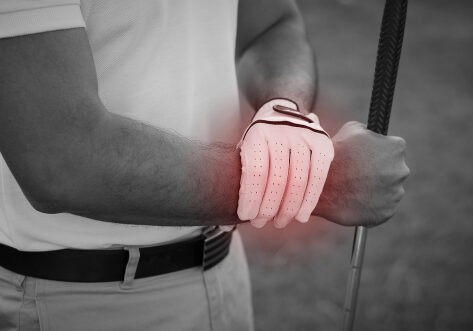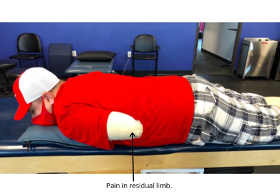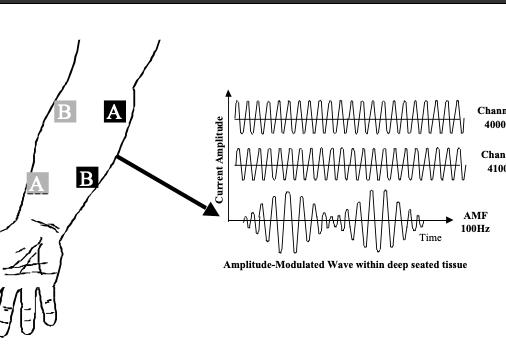Exertional (Chronic) Compartment Syndrome of The Hand
Filed under Treatments
By: Tommi Long
What is it?
Chronic exertional compartment syndrome (CECS) is an exercise-induced condition affecting the muscles and nerves, leading to pain, swelling, and reduced muscle function due to increased pressure and restricted circulation. While most commonly, it impacts the arms and legs, it is rare to happen in the hand(s). CECS is most prevalent in young adult runners and athletes who participate in repetitive activities, although anyone can develop this condition.
Signs and Symptoms:
- Weakness
- Bludging around muscle
- Tightness
- Pain while completing stretches
- Numbness and tingling
- Aching, burning, or cramping pain in the affected muscle

How is CECS diagnosed?
- X-ray to rule out any fractures or bone injuries
- MRI evaluates the compartments’ muscles and structures. Advanced MRIs can also assess the fluid volumes of each compartment during and after exercise.
- Near-infrared spectroscopy (NIRS) is a newer technique for measuring the amount of oxygen in the blood and tissue of the affected limb. It is performed at rest and after exercise.
- Compartment pressure testing measures the pressure within your muscle compartments by inserting a needle into several different places. This test is the gold standard for diagnosing chronic exertional compartment syndrome.
Treatments:
Surgical and nonsurgical methods are available for this condition, although nonsurgical options must immediately stop or significantly limit activities that cause compartment syndrome. Nonsurgical options typically don’t have long-lasting effects for true CECS.
Nonsurgical options-
- Break from exercise or activity
- Medications for pain and anti-inflammatory
- Therapy (manual therapy, ergonomics, modified environment, strengthening, flexibility)
- Botulinum toxin A injections into affected muscles
- Orthosis
Surgical Options-
- Research suggests fasciotomies are the most effective treatment (Cutting open tissues encasing affected muscle compartments to relieve pressure) or (small incisions to reduce recovery time)
- Selective releases of the thenar and hypothenar compartments
References:
Dwyer, C. L., Soong, M. C., & Kasparyan, N. G. (2016). Chronic exertional compartment syndrome of the hand: Case report and literature review. HAND, 12(3). https://doi.org/10.1177/1558944716668826
Mayo Foundation for Medical Education and Research. (n.d.). Chronic exertional compartmentsyndrome. Mayo Clinic. https://www.mayoclinic.org/diseases-conditions/chronic-exertional-compartment-syndrome/symptoms-causes/syc-20350830
Phillips, J. H., Mackinnon, S. E., Murray, J. F., & McMurtry, R. Y. (1986). Exercise-inducedchronic compartment syndrome of the first dorsal interosseous muscle of the hand: A case report. The Journal of Hand Surgery, 11(1), 124–127. https://doi.org/10.1016/s0363-5023(86)80118-6
What are the main signs of compartment syndrome?. Cleveland Clinic. (2024, August 5).https://my.clevelandclinic.org/health/diseases/15315-compartment-syndrome
More To Read
Which is better for DeQuervain’s: Splinting or Injection?
Rapid Review Cavaleri, R., Schabrun, S. M., Te, M., & Chipchase, L. S. (2016). Hand therapy versus corticosteroid injections in de Quervain’s disease treatment: A systematic review and meta-analysis. Journal of hand therapy: official journal of the American Society of Hand Therapists, 29(1), 3–11. https://doi.org/10.1016/j.jht.2015.10.004 The Skinny: DeQuervain’s Tenosynovitis is a stenosing tenosynovial inflammation affecting the…
Read MorePhantom Limb Pain, Residual Limb Pain, & Phantom Limb Sensation: Which is Which?
Written by Melissa Miller Introduction After amputation, the majority of individuals will experience phantom limb pain (PLP), residual limb pain (RLP), and/or phantom limb sensation (PLS). Experiencing these pains or sensations can greatly disrupt an individual’s quality of life. It is important to know what each of these are as each can impact the client…
Read MoreIFC vs TENS: Electrical Stimulation for Pain and Swelling
In this article we’re looking at the difference between Inferential Current versus Transcutaneous Electric Nerve Stimulation (IFC vs TENS). Transcutaneous Electric Nerve Stimulation (TENS) TENS variations are often described by their technical characteristics: high frequency, low intensity (conventional TENS) or low frequency, high intensity (acupuncture-like TENS, AL-TENS) (Walsh et al., 2009). How TENS Addresses Pain:…
Read MoreSign-up to Get Updates Straight to Your Inbox!
Sign up with us and we will send you regular blog posts on everything hand therapy, notices every time we upload new videos and tutorials, along with handout, protocols, and other useful information.





